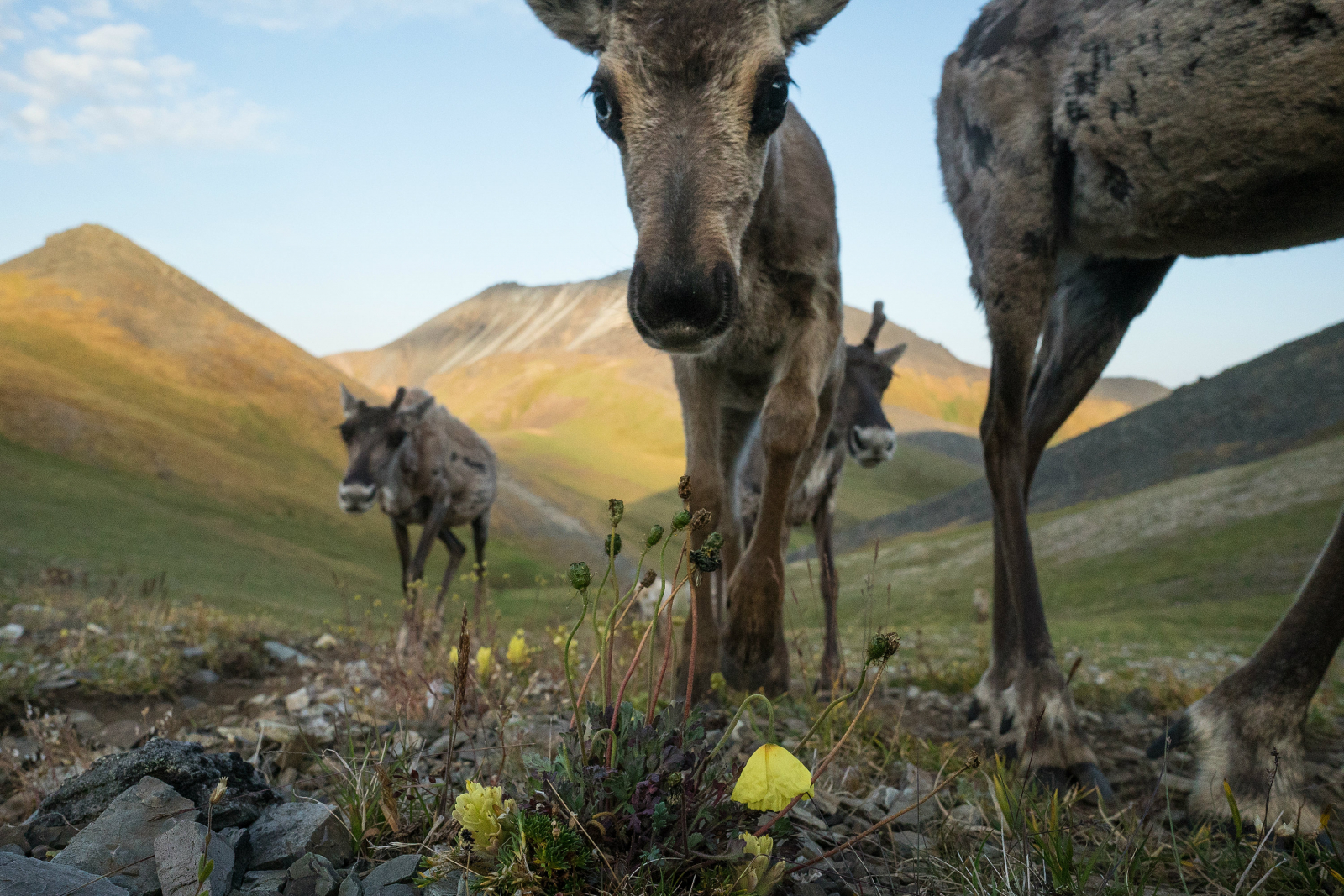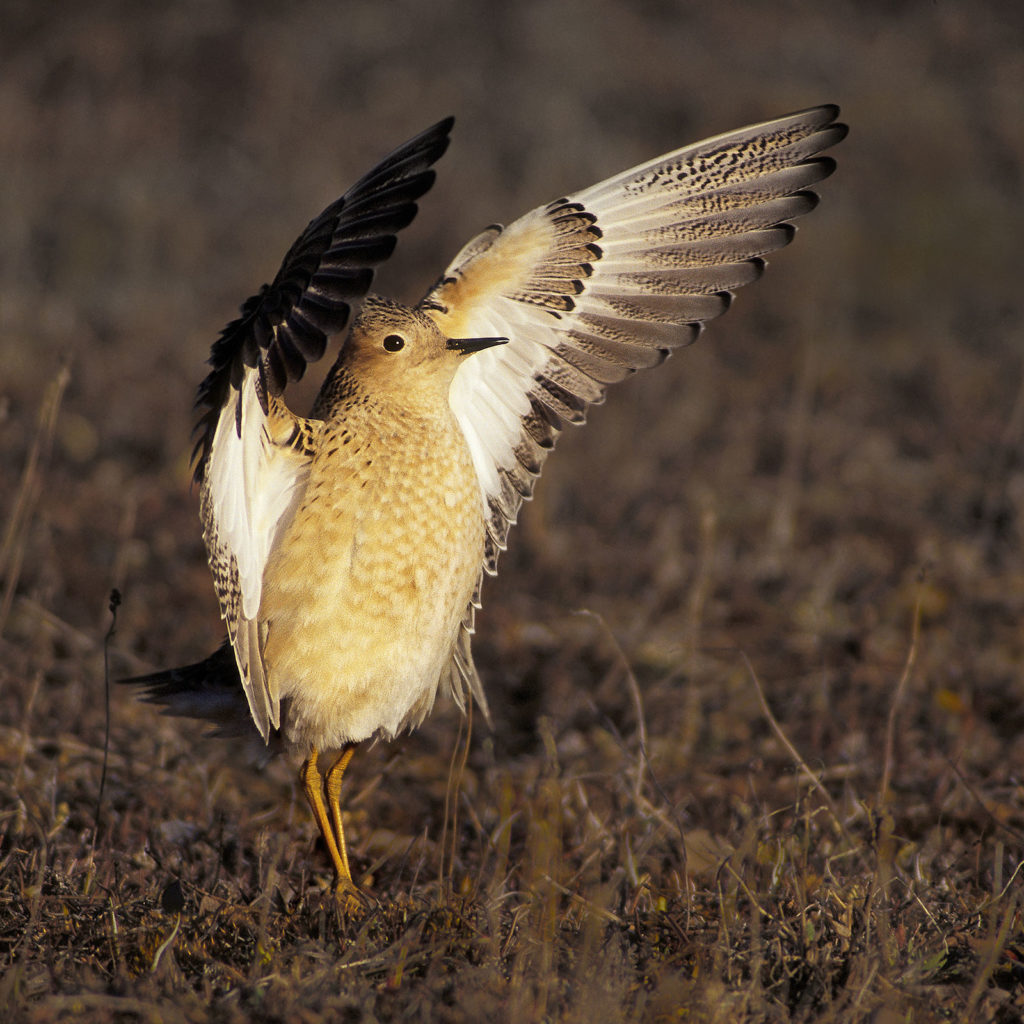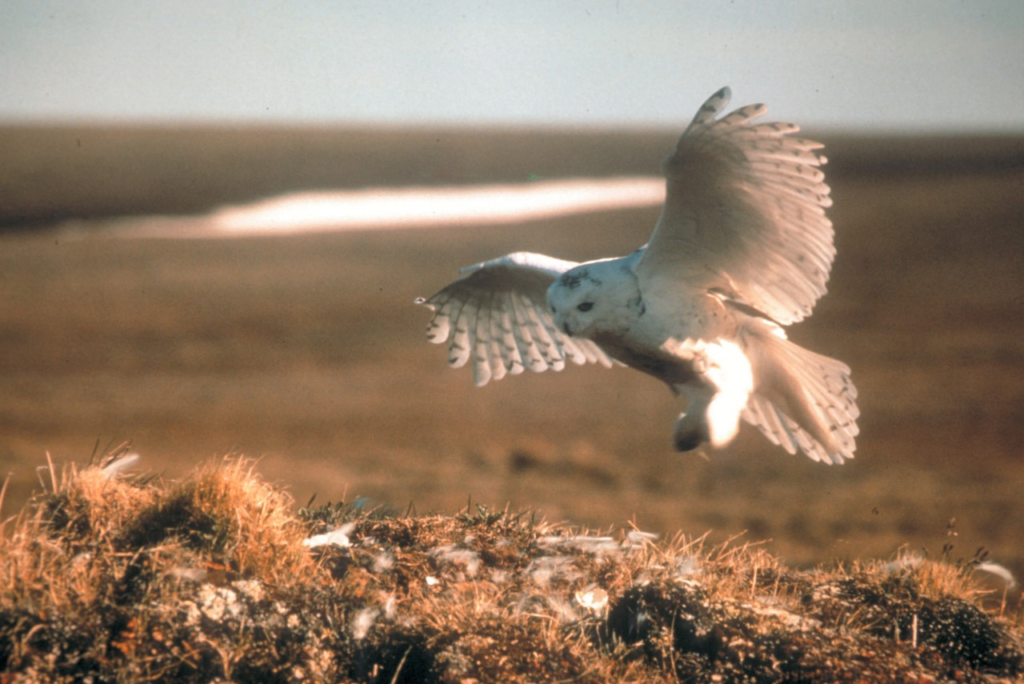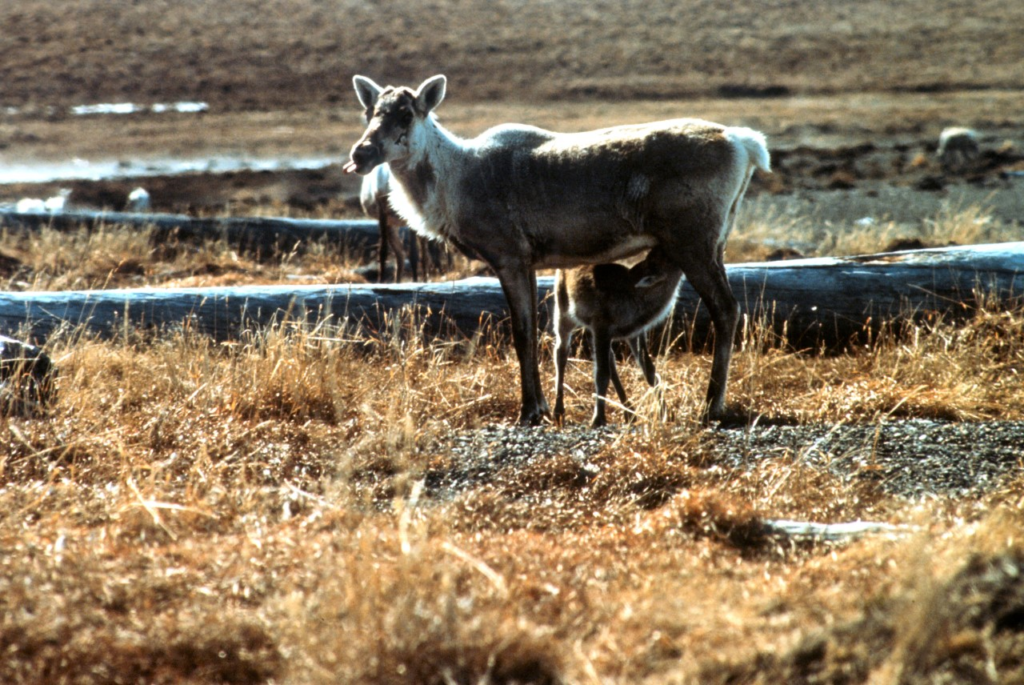
The Porcupine caribou herd is central to the ongoing struggle over the Arctic Refuge. Every year, the herd—which currently numbers over 200,000 animals—journeys from its wintering grounds in the boreal forests of Canada and Alaska, crossing over steep mountains and frozen rivers until the animals reach the Arctic coastal plain, where they have their young. If the caribou calving grounds ever became an industrialized oil field, scientists warn, the herd would suffer catastrophic declines.
Long before the herd became the focus of scientific study or conservation campaigns, the Gwich'in were stewards of the animals. Since time immemorial, they have maintained relations of responsibility with caribou and the land. In recent decades, Gwich’in from Canada and Alaska have continued this multimillennial relationship by fighting to protect the caribou calving grounds from fossil fuel development. Gwich’in leaders advocated for the 1987 US-Canada agreement, which calls for the transnational protection of the herd and its habitat. They also helped create the Porcupine Caribou Management Board, which includes representatives from Indigenous nations and organizations and from the governments of Canada, Yukon, and the Northwest Territories.
The US government has contributed to protection of the herd primarily through research and management by the US Fish and Wildlife Service (FWS). The agency has published several politically significant reports, like the 1987 Coastal Plain Resource Assessment. However, pro-drilling federal administrations censored and distorted this report as well as subsequent caribou research conducted by FWS scientists.
The Porcupine caribou herd has been the focus of advocacy by many individuals and organizations, leading to innovative projects like Canadian Parks and Wilderness Society Yukon’s “Join the Migration” Story Map. Several photographers and filmmakers have contributed to this cause, including Wilbur Mills in the 1960s and 70s, Lenny Kohm through the Last Great Wilderness slide show, Leanne Allison and Diana Wilson with their 2004 documentary Being Caribou, and, most recently, Keri Oberly, who has done extensive photography in Gwich’in communities on both sides of the US-Canada border, and Peter Mather, whose photo essays have been featured in publications like Maclean's and Yukon News.
Though the case for protecting the Arctic Refuge has often centered on caribou, the coastal plain provides much-needed habitat for an enormous array of other species. For example, polar bears rely on the coastal plain for denning sites. These land-based dens have become increasingly important due to the rapid retreat of sea ice caused by climate change. The Arctic Refuge also provides sustenance and shelter to over 200 species of migratory birds. In an important 2001 report, Audubon Alaska showcased the incredible populations of birds that migrate from across the continent and around the world. Subhankar Banerjee, another photographer and prominent defender of the Arctic Refuge, captured the seasonal variety and diverse wildlife of the region through his first major photography project, Seasons of Life and Land. As Banerjee's photos and these other sources demonstrate, the Arctic Refuge is ecologically connected to places far beyond the northeastern corner of Alaska.
Caribou Photography and Film
- Being Caribou by Leanne Allison and Diana Wilson (2004)
- Photo essays by Peter Mather in Maclean's (2015) and Yukon News (2020)
- Photos of Gwich’in communities by Keri Oberly (2020)
Government Policies and Documents on Caribou
Other Caribou Resources
Other Wildlife of the Refuge
- Dr. Steven Amstrup interview on why the Arctic Refuge matters to polar bears (2020)
- Audubon Alaska Report on Birds and Oil Development in the Arctic Refuge (2001)
- Arctic National Wildlife Refuge: Seasons of Life and Land by Subhankar Banerjee (2003)
- Arctic Wings: Birds of the Arctic National Wildlife Refuge edited by Stephen Brown (2006)
- "My Time among the Peregrine Falcons," talk by Fran Mauer (2021)
Photograph at the top of page by Peter Mather.





